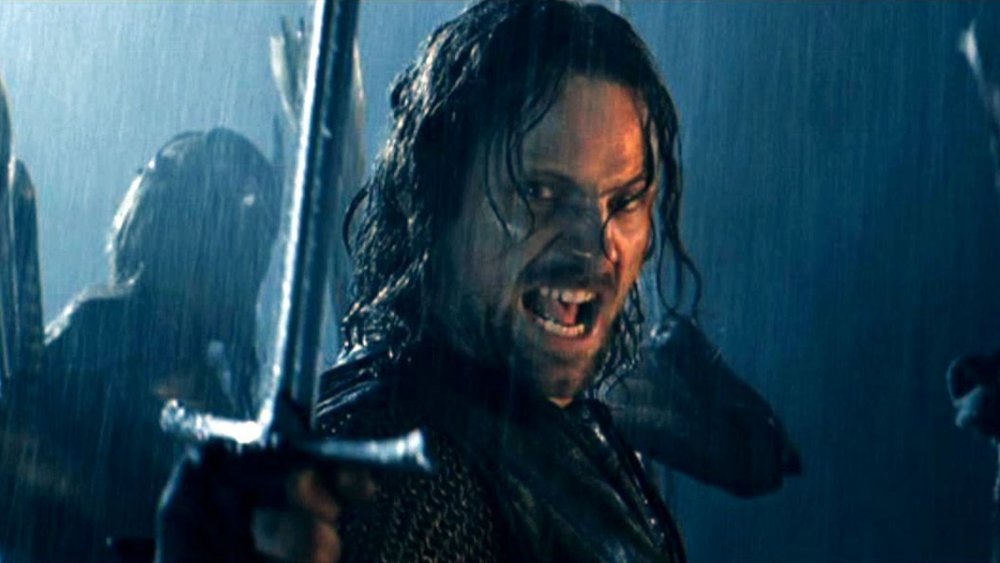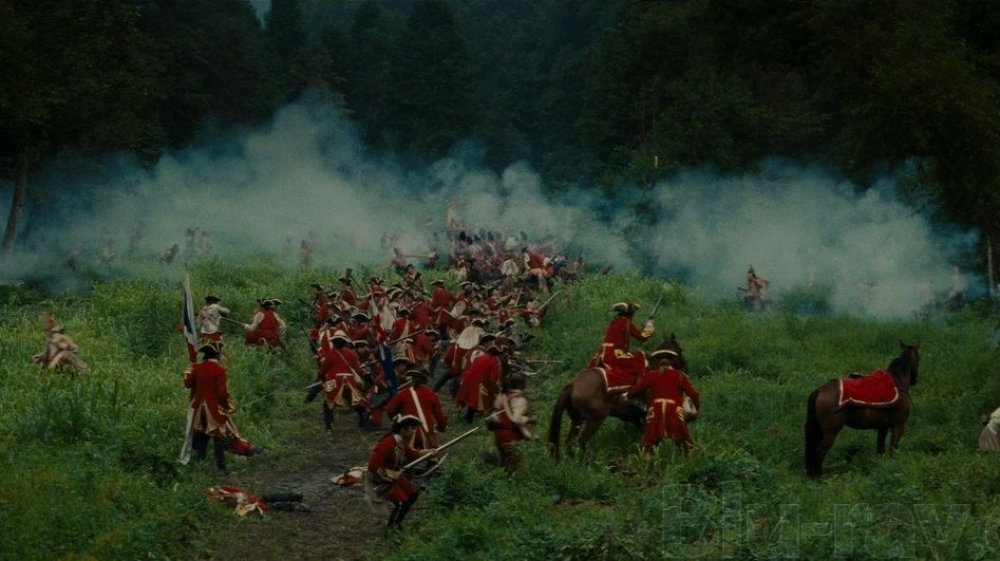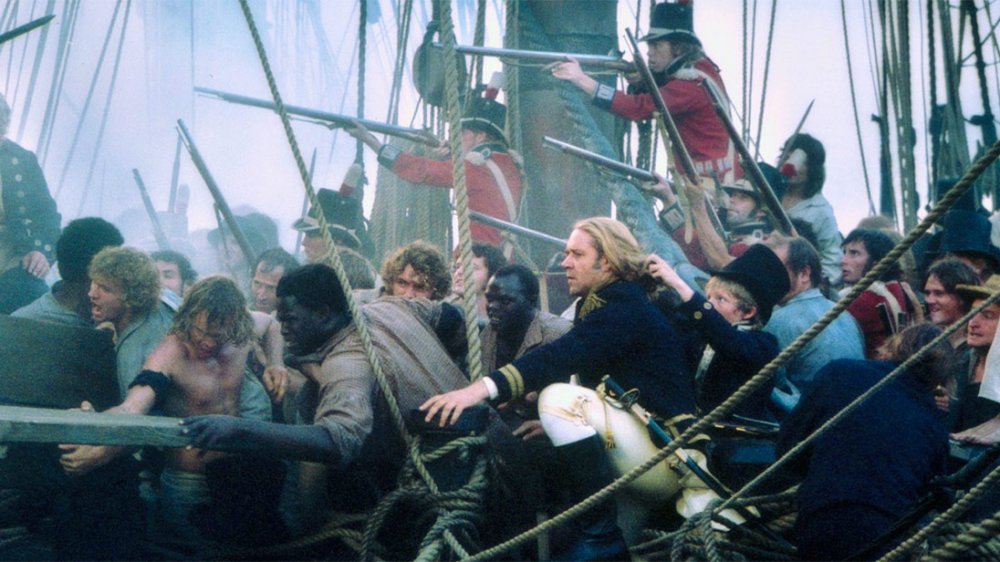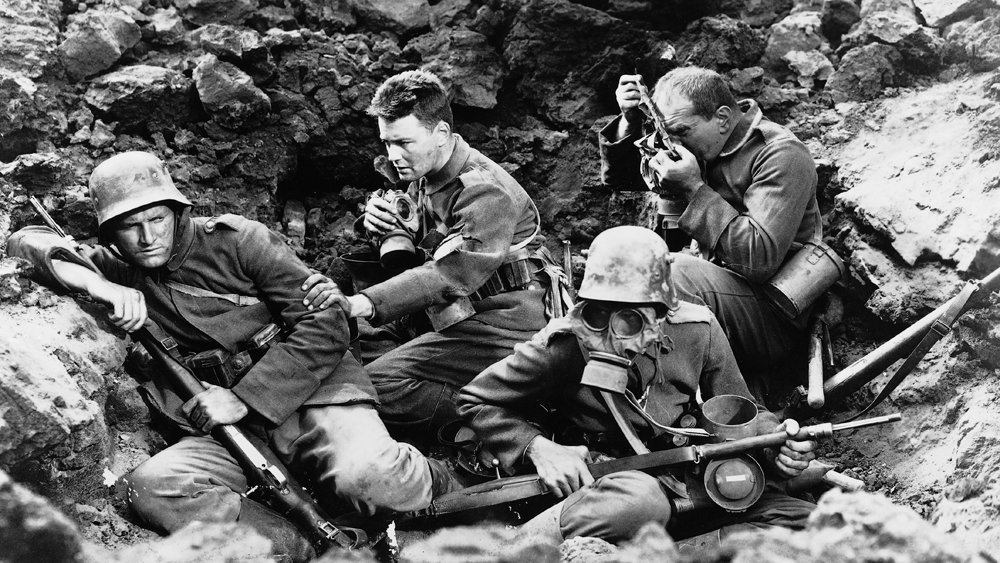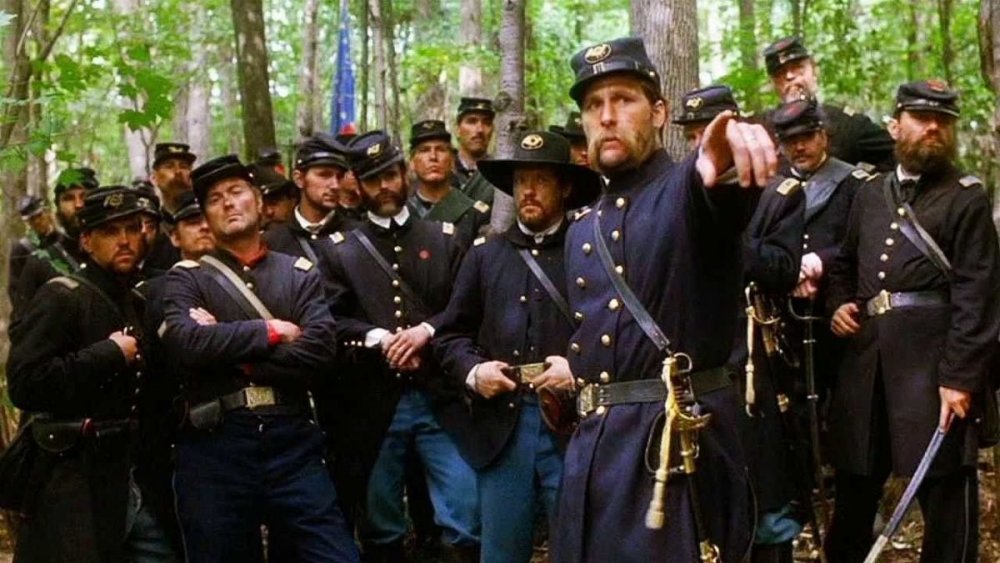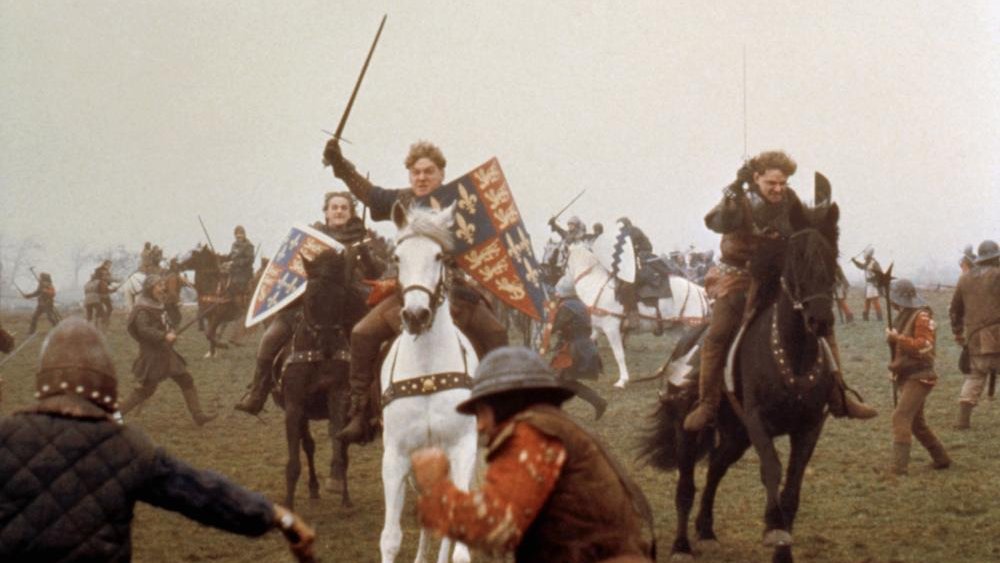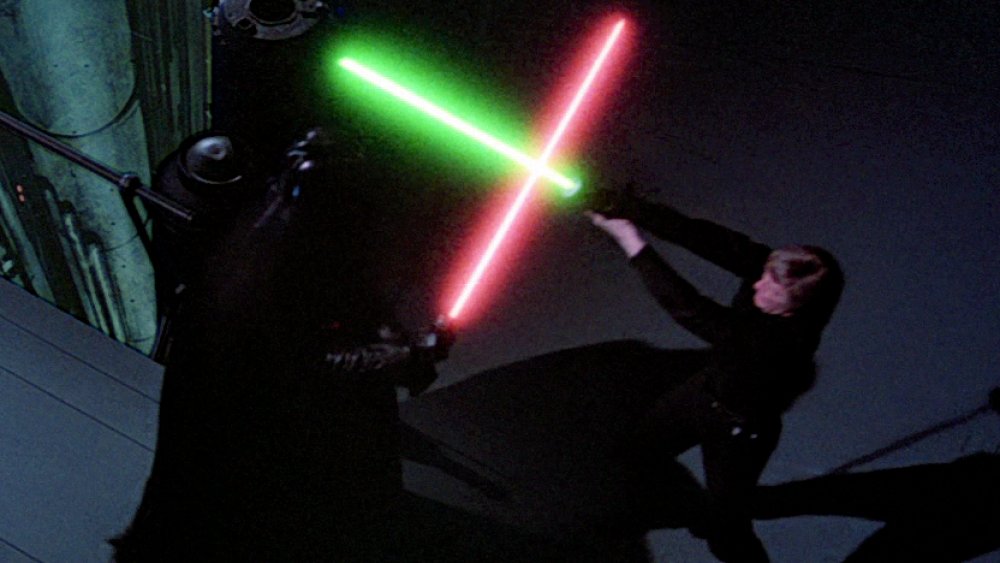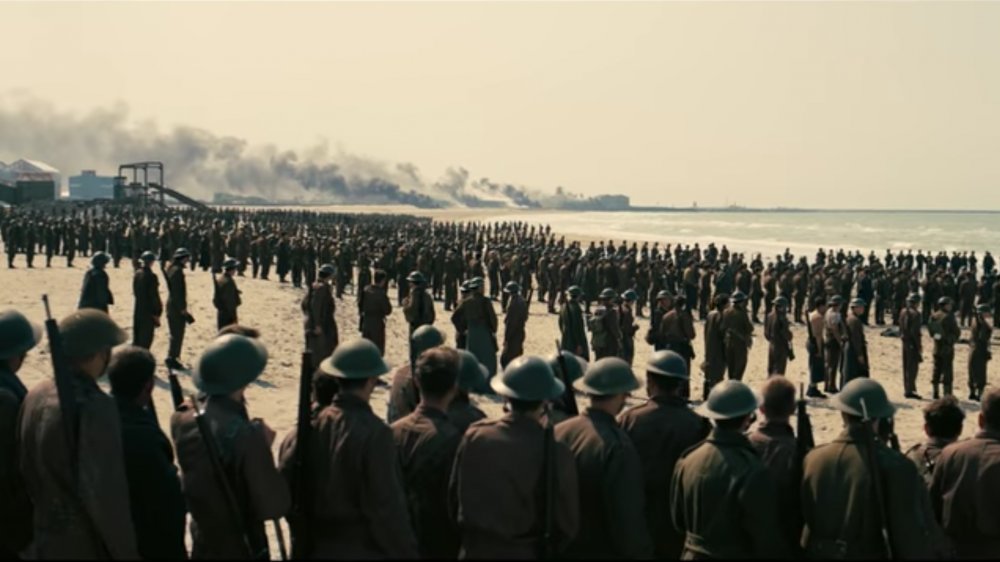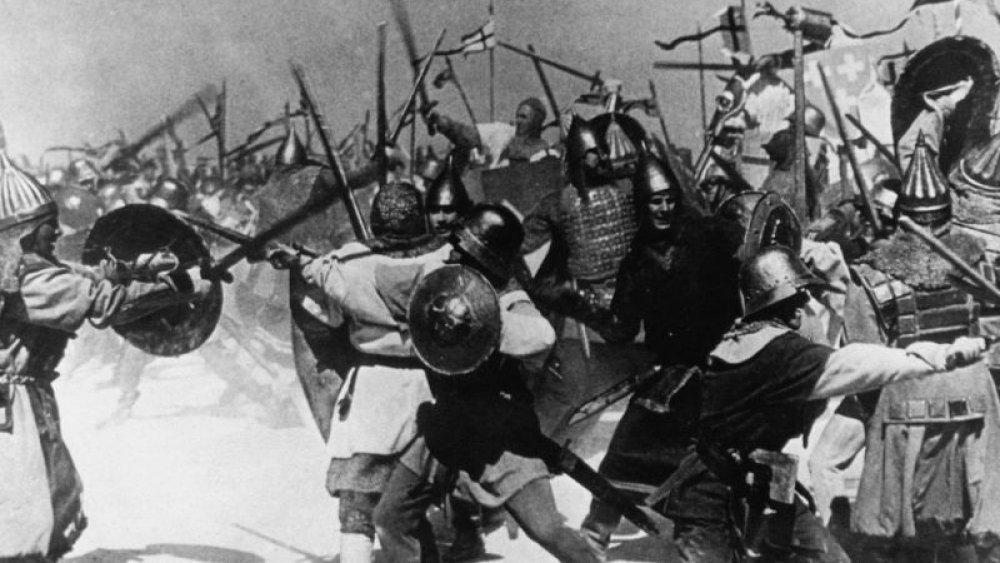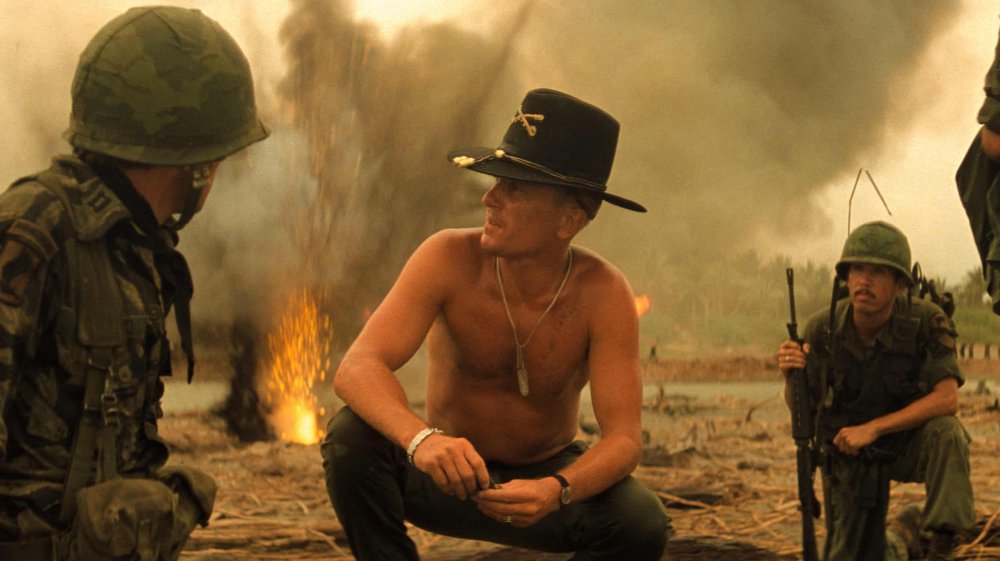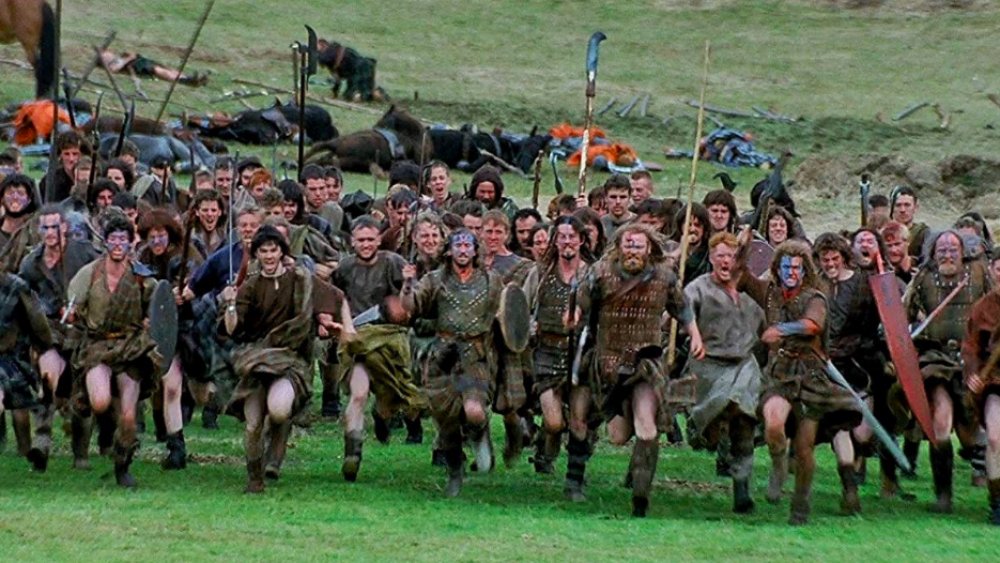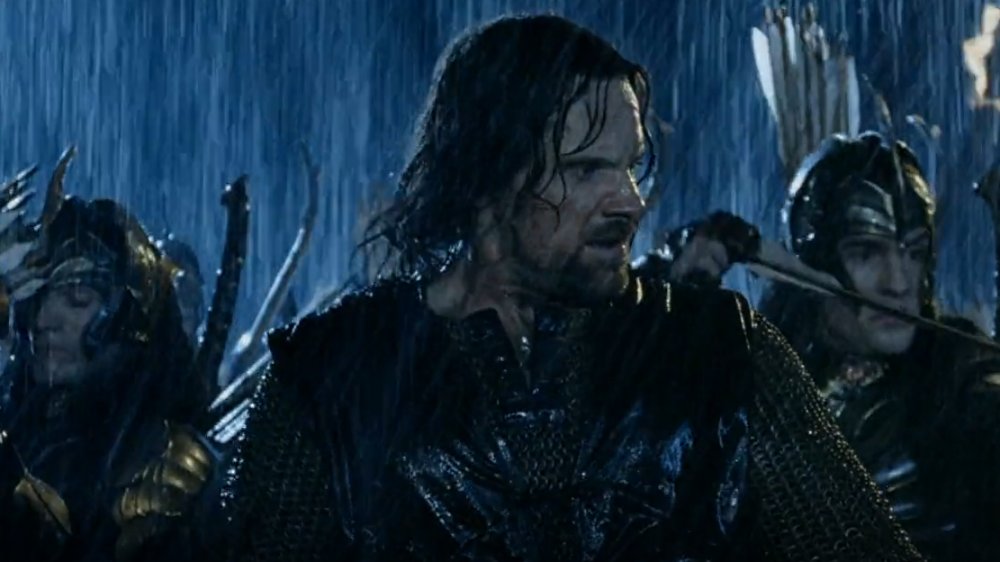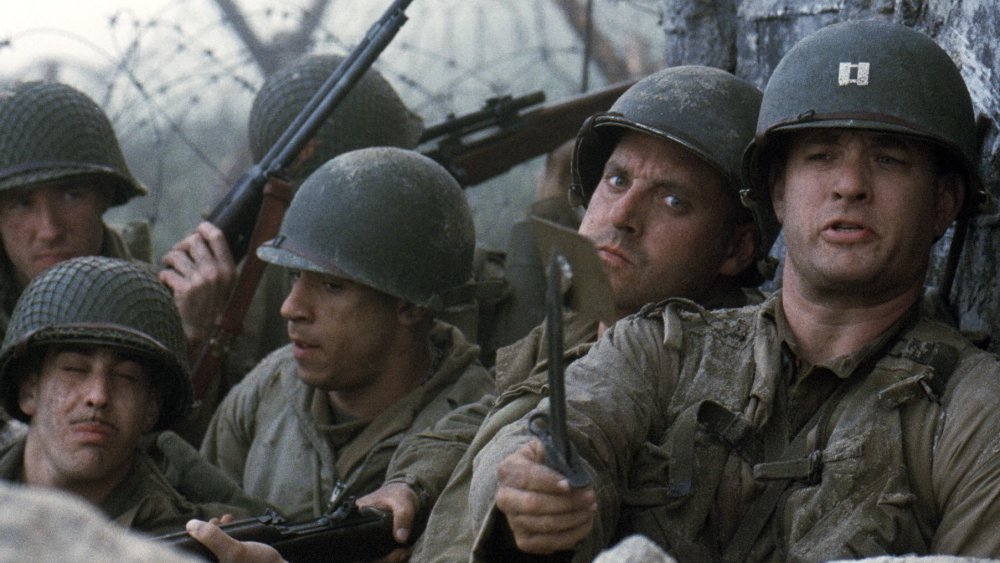The Best Movie Battle Scenes Of All Time
Filmmakers figured out early on that there's almost nothing more exciting in movies than a great battle scene. D.W. Griffith's revolutionary (and disgustingly racist) 1915 film The Birth of a Nation includes a sequence depicting the American Civil War. The low-quality, black-and-white shots of basic smoke effects and tattered flags certainly aren't much by today's standards, but the impact was enormous: Hollywood learned its lesson and never looked back, pouring money into bigger, flashier, bolder fight scenes to stand out and grab the audience's money.
And let's be honest: they wouldn't be bothering if we weren't so dependably happy to fork it over. Over time, basic, silent wide shots of distant fighting men became colorful set pieces with explosions and gunfire and charging cavalry. From there, advances in cinematography and editing have brought us further and further into the battles themselves, until it can be easy to forget you're watching a movie at all. From Star Wars to Henry V and Apocalypse Now, we're here to take a look at some of the biggest, bloodiest, most unforgettable, all-around best battle scenes ever put to film.
The Ambush - The Last of the Mohicans (1993)
The year is 1757. British Colonel Edmund Monro commands Fort William Henry in the Adirondacks, a place besieged by hostile native warriors during the French and Indian War. He and the soldiers and civilians under his charge are permitted to leave in peace in exchange for the fort, as per the terms of a deal struck with the French. However, a Huron named Magua does not take kindly to the escape of the enemy.
While the British column marches through a field, Magua and his warriors ambush them from the sides in a vicious, haunting, brilliantly shot massacre that easily earns a spot on this list. A shot of the whole column, in which scattered, confused musket blasts roll into entire volleys as the warriors pour from the woods, is particularly unforgettable. It's unlikely the brightly colored imperial redcoats stood much of a chance: the Hurons sweep in with unrelenting fury as British order collapses and Daniel Day-Lewis and his friends try to make a frantic escape. All of The Last of the Mohicans is well worth watching, but come on. This is the scene you came for.
The Naval Ambush - Master and Commander: The Far Side of the World (2003)
Master and Commander is an excellent (but mostly forgotten) 2003 film, based loosely on a long-running book series by Patrick O'Brian. Those who do remember the movie likely do so because of the epic, tightly edited, ferocious battle at the end, in which Jack Aubrey (Russell Crowe) and his men ambush, board, and capture the Napoleonic French vessel Acheron, which they've spent much of the movie losing scrapes with, hiding from, and trying to outrun.
The battle opens with the heroes posing as civilian whalers. Only when they obey orders shouted via bullhorn from the French ship, to slow down and allow the Acheron to catch them (allegedly for inspection), do they "let fly" the Union Jack and unleash a hurricane of bullets and grapeshot that takes Napoleon's sailors by complete surprise. With Acheron's mainmast toppled, the Englishmen board the French boat and take the decks in a flurry of knives, fists, axes, oars, carbines, hand grenades, and flintlocks. The French put up a valiant but doomed defense that serves only to delay the inevitable and entertain the hell out of those of us watching it all unfold from the couch.
Trenches - All Quiet on the Western Front (1930)
Obviously based on Erich Maria Remarch's novel of the same name from the previous year, All Quiet on the Western Front is an early examination of life in the trenches during the First World War. The entire film is excellent, but it's the various battle scenes that continue to stand out after all these years.
This clip, depicting a massive but futile charge by French soldiers across No Man's Land, is hauntingly effective nearly a full century after its release. It features the classic Griffith wide shot, but breaks that up with close-ups of German machine gunners and French troops trying to outrun falling shells and climb through and over barbed wire while under fire from the front. In a particularly memorable shot, a soldier doing just this is killed by a grenade; when the smoke clears, his severed hands continue to grasp the wire. Again, and we can't stress this enough — this was from 1930. It would be decades before violence on screen was depicted so authentically and powerfully again.
Gettysburg - Gettysburg (1993)
Gettysburg, the epic, four-plus hour, made-for-TV film by Ron Maxwell and starring Martin Sheen, Jeff Daniels, Sam Elliot, and many others (and based on Michael Shaara's novel The Killer Angels), is an anomaly. Everything in it — from the cinematography to the visual effects to the pudgy, middle-aged actors playing the soldiers, instead of scrawny kids — felt low-budget and dated, even at the time of its 1993 release.
And yet, the movie is undeniably greater than the sum of its endearingly corny parts. It gets far more right than wrong in its surprisingly balanced depiction of the men and decisions that defined the Civil War's most famous battle. We're also treated to some wonderful performances and unforgettable (albeit rather bloodless) battle sequences, set to a sweeping, pounding score by Randy Edelman. Say what you will about those goofy fake beards, but we dare you not to tear up when Colonel Chamberlain orders his men to fix bayonets at Little Round Top, or when you watch thousands of dedicated re-enactors marching across the field to their doom during Pickett's Charge, or when a dying "Lo" Armistead (Richard Jordan) mourns the wounding of his dear friend but battlefield foe, Winfield Scott Hancock. For all its shortcomings, Gettysburg is surprisingly timeless.
(Oh, one more thing that works: unlike the atrocious box office bomb of a 2003 prequel, this movie doesn't try to ram pro-Confederate Lost Cause propaganda down your throat).
Battle of Agincourt - Henry V (1989)
The writing of William Shakespeare is generally associated with the stage, for obvious reasons. People are aware of the film versions of his many plays, but mainly because they had to watch them in school. But the Kenneth Branagh-fronted Henry V isn't just a good adaptation of one of the seminal playwright's most notable works. It's not even just a good film in and of itself. It happens to feature one of the best, most influential battle scenes ever made: The Battle of Agincourt.
The battle was made possible by dutiful penny-pinching for the first two thirds of the film, and is immediately preceded by a take on the titular character's St. Crispin's Day speech that plays up the futility and madness, rather than the glory, of war. Before it, battle scenes in films were, generally, PG-13 affairs that relied heavily on the wide shot, popularized by legendary filmmaker D.W. Griffith and designed to show off all the fancy toys the filmmakers had at their disposal. Henry V's Agincourt, though, is a close quarters, rapid-cut, claustrophobic brawl. Men crossed swords and slashed throats and drowned each other in the mud. It felt like an actual battle, in other words — a desperate struggle for survival — and it opened the door to numerous like-minded battle scenes in the future.
The Battle of Endor - Star Wars Episode VI: The Return of the Jedi (1983)
This one might be cheating, since it's really three battles for the price of one, but we doubt anyone minds. On the ground, Han, Leia, Chewie, and the droids lead a rebel/Ewok strike team across the forest moon of Endor to disable the imperial shield generator that protects the nearly operational second Death Star (don't ask why they didn't put the generator on the station itself). In space, Lando Calrissian and Admiral Ackbar lead the remnants of the rebel fleet against its massive, discreetly assembled Imperial counterpart, in a bid to destroy said Death Star.
But it's the scene on the space station itself when the movie truly shines. In the throne room, Luke Skywalker, now a full Jedi knight, struggles to resist the Emperor's seductive demands that he join the dark side, and to turn his Sith Lord father back to the light. It's arguably the greatest, most triumphant sequence of the entire nine-film saga, and wraps up the original trilogy in unforgettable fashion. We dare you not to get chills when Luke leaps out of the shadows to defeat Vader a final time, and the music swells.
Dunkirk - Dunkirk (2017)
Just when you thought nothing else of note could be added to the war genre, Christopher Nolan released 2017's Dunkirk and raised the bar. Several things are notable about the film, which depicts the 1940 battle in which 400,000 nearly surrounded English troops struggled to escape the advancing Nazis in 1940. One, there's that classic Nolan nonlinear narrative. The story is told across three interlocking accounts: The weeklong struggle of the soldiers stranded on the beach and awaiting rescue by sea; the daylong journey of a civilian crewed pleasure craft that crosses the English Channel to assist in that rescue; and the hourlong exploits of a Royal Navy fighter pilot battling his counterparts in the Nazi Luftwaffe for control of the skies over the battlefield. It's doubtful a lesser filmmaker could pull this off; Nolan makes it look easy.
The second interesting thing about the film is the almost complete lack of backstory for most of the characters. Nolan realized you don't need to see a soldier pull a picture of his sweetheart from his pocket to understand why he wants to get home. He wants to escape because he is exposed to German planes, and making peace with God every time a Stuka dive bomber announces its presence above you, with that nightmare-inducing wingtip-siren wail, must be tiring indeed.
The Battle on the Ice - Alexander Nevsky (1938)
You don't typically think of the Soviet Union as being an artistic powerhouse, but apparently nobody told that to Alexander Nevsky director Sergei Eisenstein. His film, about the 1242 AD defeat of the invading German Teutonic Knights at the hands of Prince Alexander of Novgorod, is one of the most overlooked, influential movies of all time. It doesn't take much investigation to realize the film was made during a time of heightened tensions between Stalin's USSR and Hitler's Germany (the two would be at open war within three years). So unsurprisingly, that whole "defeat the German invader" thing would only become more relevant in the years immediately following the movie's release.
The scene depicting the Battle on the Ice is particularly noteworthy and ahead of its time. In an age in which big set piece battles were dominated by the Griffith wide shot, Eisenstein gave us a strikingly modern sequence with chaotic close-ups, rapid editing, a character seeking revenge for a fallen comrade, and several other elements of battlefield filmmaking that didn't become widely used for several more decades.
Ride of the Valkyries - Apocalypse Now (1979)
The 1970s were something of a turning point for the war genre. Before that, audiences expected the jingoistic cheese of John Wayne shooting up villainous foreigners while the Stars and Stripes slapped the breeze behind him. Then came Godfather mastermind Francis Ford Coppola's Apocalypse Now, a wartime masterpiece based on Joseph Conrad's 1899 novella Heart of Darkness (with the setting, of course, changed from the Congo to the Vietnam War). The whole film is mesmerizing and bizarre and terrifying and essential.
But it's that early air raid sequence at the beginning of Ben Willard's (Martin Sheen) journey that makes it truly unforgettable. Audiences weren't used to seeing American soldiers depicted as evil, but there's simply no other way to describe the glee with which U.S. flyboys carry out that now-legendary, ruthless helicopter raid against an unsuspecting village harboring the Viet Cong. Richard Wagner's "The Ride of the Valkyries" has been around since the 19th century, but everyone who hears it now likely thinks of little else but napalm in the morning.
The Battle of Stirling - Braveheart (1995)
Yeah, yeah. Scots didn't wear kilts in the 13th century, and William Wallace was the wealthy son of a noble, not a man whose righteousness and badassery bootstrapped him from obscure poverty to national leadership. We know. And we don't care.
Say what you will about Braveheart's historical accuracy (or lack thereof), or Mel Gibson himself. But nobody can watch the fight sequences in this Oscar-winning 1995 historical epic, and deny the man can film one hell of a battle scene when he wants to. The Battle of Stirling simply has it all: outnumbered underdogs, sneering villains, cinematography and editing that actually allow you to follow the tactics involved, and a fist-pumping climax that makes you want to quit your day job, grab a wooden pike, and declare independence from the Longshanks in your life.
The other battles depicted in the film are great too, but Stirling is a beast of a sequence worth rewatching again and again.
Helm's Deep - The Lord of the Rings: The Two Towers (2002)
Some might argue that The Return of the King's Battle of Pelennor Fields should've made this list. It was bigger and flashier, for sure, and featured the series' high point and one of film history's greatest scenes: the ride of the Rohirrim. Nobody can deny it's big-screen spectacle at its most glorious. But its mighty scale and (at least at the time) jaw-dropping visual effects didn't offer anything we hadn't already seen in the previous film's Battle of Helm's Deep, which barely beats it out.
Peter Jackson brought Theoden's (almost) last stand to life in a way that felt painfully real, despite the presence of elves and wizards, by first firmly establishing that only a miracle could save our hopelessly outnumbered, backed-into-a-corner heroes from the hordes of Saruman. When the hammer fell, you felt the unaffordable death of every defender like a punch in the gut. You felt those walls get breached, first by ladders, then by the mine, then by battering rams. You felt the frantic desperation of the dwindling, exhausted survivors as they realized there was increasingly little they could do, no matter how bold, to stop an army of Uruk-Hai from breaching the last of their defenses and slaughtering the innocents they protected. Then, when Gandalf and Eomer arrived and saved the day at the eleventh hour, you breathed a sigh of relief, and realized you were drenched in sweat. Now that is movie magic.
Omaha Beach - Saving Private Ryan (1998)
Endlessly imitated but never equaled, the Normandy landing sequence from Steven Spielberg's Saving Private Ryan changed movies forever. Audiences had seen screen violence before, but the maelstrom of carnage, madness, death, and screaming, mangled kids that awaited them in the opening half hour of this herculean 1998 World War II epic was so unrelenting and authentic that it left viewers speechless, and veterans weeping in the halls.
The scene features no sweeping score and little CGI: just tight editing, masterfully stripped down cinematography, and hundreds of terrified young men, soaked in blood and seawater, being asked to do their duty in the face of almost certain death. The movie didn't stoop to the inclusion of corny, played-out tropes to portray its protagonists as heroes. It didn't even portray them as fearless; it simply depicted the hell they endured, and that was enough.
Great battles have graced the big screen both before and since, but Private Ryan comes the closest of them all to dropping you right there, under fire on that bloody beach. Quite a view indeed.
